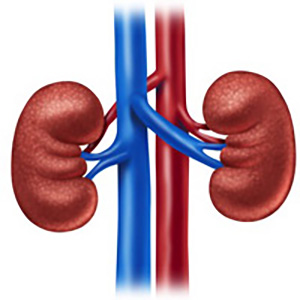Safety and efficacy of percutaneous nephrolithotripsy in comorbid patients: A 3 years prospective observational study

Accepted: August 1, 2023
All claims expressed in this article are solely those of the authors and do not necessarily represent those of their affiliated organizations, or those of the publisher, the editors and the reviewers. Any product that may be evaluated in this article or claim that may be made by its manufacturer is not guaranteed or endorsed by the publisher.
Authors
Purpose: To report the result of percutaneous nephrolithotripsy (PCNL) via standard nephrostomy tract in a single training institution. The perioperative complications in relation to the comorbid state are particularly assessed. Patients and methods: A prospective interventional study between January 2019 to November 2022, included 210 patients scheduled for PCNL. The average age was 40.3 ± 11.8 years (range 18- 67 years). Patients were categorized into two groups. The first group comprised 146 cases (69 .5%) with no associated co-morbidities while the second group 64 (30.5%) had co-morbidities such as obesity in 4 cases (1.9%), hypertension (HTN) in 24 cases (11.4%) cases, diabetes mellitus (DM) in 17 (8.1%) cases, history of recurrent stone surgery in 11 (5.2%) cases and more than one in 8 cases (3.8%). Co-morbidities, stone burden, location of stone, time of surgery, stay in the hospital, further operations, and negative events were among the reported data. Complications and the stone-free rate were the main outcome indicators. Results: Intraoperative complications were reported in 40 (18.8%) patients (18 group 1 and 22 group 2) during PCNL. Bleeding occurred in 22 (10.5%) patients (9 group 1 and 13 group 2), blood transfusions were needed in 4 (1.9%) (2 group 1 and 2 group 2), extravasation was observed in 11 patients (5.2%) (6 group 1 and 5 group 2) and cardiac arrhythmia in 3 (1.4%) (1 group 1 and 2 group 2) patients. Postoperative complications occurred in 61 patients (29%) (24 group 1 and 37 group 2) in the form of fever in 10 patients (4.8 %) (3 group 1 and 7 group 2) and prolonged leakage in 50 patients (23.8%) (21 group 1 and 29 group 2). One patient of group 2 died from postoperative sepsis. Extravasation and postoperative leakage were higher in diabetic patients than in non-diabetics. Stonefree rate was 60.5% (127 of 210). Clinically significant residual fragments (CSRFs) found in 70 cases (33.3%) (33 group 1 and 37 group 2). In 13 cases (6.2%) (5 group 1 and 8 group 2), clinically insignificant residual fragments (CIRFs) were found. In 8 (3 group 1 and 5 group 2) of the 13 cases, spontaneous stone passage was observed within 4-6 weeks of surgery. Residual stones in three cases (1 group 1 and 2 group 2) were asymptomatic and 4 mm or less, whereas stones increased in two cases of group 2. Among all factors studied, stone burden was significantly correlated to both intraoperative and postoperative complications. The occurrence of postoperative fever increased with large stone burden. Conclusions: PCNL is a therapeutic modality that is effective, feasible, and safe for a wide range of patients with concurrent medical issues. A steep curve is required to reduce intraoperative and postoperative complications.
How to Cite

This work is licensed under a Creative Commons Attribution-NonCommercial 4.0 International License.
PAGEPress has chosen to apply the Creative Commons Attribution NonCommercial 4.0 International License (CC BY-NC 4.0) to all manuscripts to be published.

 https://doi.org/10.4081/aiua.2023.11581
https://doi.org/10.4081/aiua.2023.11581



